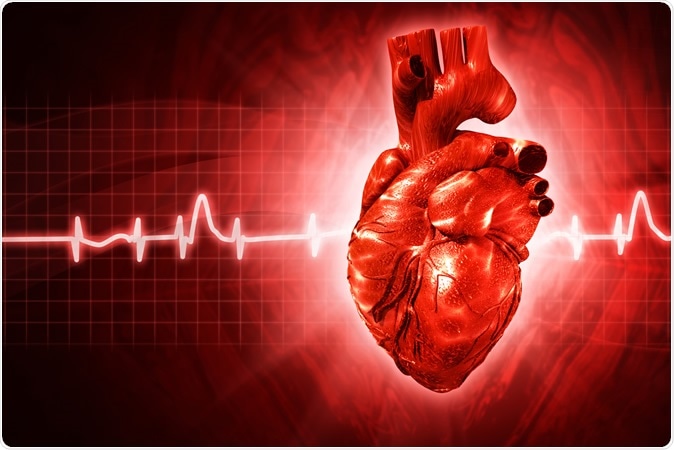The world has been brought to a stand-still by the COVID-19 pandemic that has affected 197 countries, areas and territories, infected 467,594, and killed 21,181 individuals as of today. COVID-19 disease is caused by severe acute respiratory syndrome coronavirus 2 (SARS-CoV-2), a single-stranded RNA virus, contagious in humans.
Researchers believe that COVID-19 infection might keep coming back due to genetic recombination, as does influenza. Cardiovascular diseases or heart diseases are one of the most prevalent non-communicable illnesses, and there is a possibility of both of these conditions co-existing at present as well as in the near future.
As the world and China fought the emerging cases of COVID-19 and worked to fight the spread of the disease, there have been several epidemiological studies looking at the effects of the infection in different populations. These epidemiological studies have helped health care workers and researchers devise plans to combat the spread of this infection.
Researchers from the Department of Cardiology and Macrovascular Disease, Beijing Tiantan Hospital, Capital Medical University, Beijing, China published their findings in a study titled, “An Acute Respiratory Infection Runs Into the Most Common Non-communicable Epidemic— COVID-19 and Cardiovascular Diseases,” in the latest issue of the journal JAMA Cardiology.
The team wrote that they found several patients with COVID-19 to have concurrent cardiovascular diseases (CVDs). They explained that these CVDs form the commonest non-communicable or transmissible disease in China at present.

Image Credit: Ase / Shutterstock
What was done?
Taking the cut off date of 11th February 2020, the team noted that there were 44,672 individuals diagnosed with COVID-19 in China. Of these patients, 2,683 individuals or 12.8 percent had high blood pressure or hypertension. Further, 873 individuals or 4.2 percent had other cardiovascular diseases. Among those admitted with COVID-19, the most common co-existing condition remained CVDs, they wrote. For this study, the team looked at the incidence of CVDs and the medical details of these patients affected by COVID-19. Some of the CVDs include “ischemic heart disease, heart failure, cardiac arrhythmia,” apart from hypertension.
What was found?
CVD and COVID-19
The researchers noted that patients with coexisting CVDs had a more severe illness with COVID-19. Their risk of death was also more significant, the team noted. Among those with CVDs, the risk of death was 10.5 percent, while among those with high blood pressure, the risk of death was 6 percent. Among patients who did not have any comorbid conditions, the risk of death was 0.9 percent. The team wrote, “individuals with underlying chronic CVDs were both more susceptible to COVID-19 and more prone to critical conditions and death.”
Mimicking the symptoms
The researchers explained that acute infection of the lungs could “destabilize” heart diseases such as heart failure and coronary artery disease. They added that when there is a deterioration of heart diseases, there is usually an exacerbation of COVID-19. Persons with heart failure, as well as those with COVID-19, may develop symptoms such as shortness of breath and fatigue. They explained that among patients with heart failure diagnosis of COVID-19 may thus prove to be complicated. Among patients with coronary artery disease, there may be a rupture in the coronary plaques in the arteries. This may be triggered by the inflammation of the body caused by COVID-19. Those with heart attacks have a meager chance of surviving COVID-19, explained the researchers. They also brought to notice that there has been inadequate importance given to CVDs among those with COVID-19. This was the first study that looked at both conditions and the outcome.
This study also showed that acute cardiac injury was seen in 10 patients (7.2 percent) of COVID-19. Acute heart damage was detected by a test called troponin I, which was found to be elevated. Similarly, arrhythmias were found in 16.7 percent or 23 with those having COVID-19. Many of the patients who developed COVID-19 had tachycardia or rapid heart rate.
Cardiac changes of COVID-19 from post mortem study
One previous study has looked at the biopsy features of the heart after death of a patient due to COVID-19. The researchers found that there were “mononuclear inflammatory infiltrates in the myocardial interstitium, without substantial damage in the heart tissue.” They explained that there might be a storm of systemic inflammation in these patients caused due to an overactive inflammatory response to the virus and its infection.
COVID-19 and ACE inhibitors and ARBs
The researchers answered a pertinent question in their study and explained that SARS-CoV-2 and the SARS-CoV (the virus that caused SARS in 2003) have a similar receptor in the host where they bind – the ACE2 or the angiotensin-converting enzyme 2. This enzyme receptor is protective in CVDs. SARS-CoV-2 has a ten fold more affinity for this receptor compared to the earlier virus. ACE2, they wrote, can protect against “hypertension, myocardial fibrosis, myocardial hypertrophy, arrhythmia, atherosclerosis, and sodium-water retention.” Angiotensin-converting enzyme inhibitors (ACEI)and angiotensin receptor blockers (ARB) are drugs that are commonly used to treat patients with hypertension or high blood pressure, heart failure, cardiac ischemia, etc. They speculated that the use of these drugs could thus raise the risk of COVID-19 infection.
The researchers concluded, “Considering that CVDs represent the leading non-communicable epidemic around the world and numerous patients with CVDs are using ACEI/ARB, clinical studies may be necessary to explore the potential associations of ACEI/ ARB with susceptibility and prognosis of COVID-19.”
Journal reference:
Yang C, Jin Z. An Acute Respiratory Infection Runs Into the Most Common Noncommunicable Epidemic—COVID-19 and Cardiovascular Diseases. JAMA Cardiol. Published online March 25, 2020. doi:10.1001/jamacardio.2020.0934